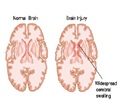
The researchers at the New York University have sought to understand the neurological processes behind eye and arm movements.
For example, when you reach for an object, what goes on in our brains so that our eyes and arms are in sync? Such coordination is central to the way different systems of the brain communicate with each other, and these undertakings are surprisingly complicated-due to differences in weight, for instance, the arm takes longer than the eye to move.
The question is vital to rehabilitation-a better understanding of these neurological processes may help address the needs of those who have suffered brain injuries and struggle to coordinate movements among different parts of the body.
In addition, new insights in this area could lead to more advanced neural prosthetics, which are artificial extensions to the body that restore or supplement function of the nervous system lost during disease or injury. Currently, these devices are somewhat primitive given our relatively limited knowledge of how the brain works to coordinate movement.
In their study, the NYU researchers examined the neurological activity of macaque monkeys while the subjects performed a variety of tasks that required them to either reach and to simultaneously employ rapid eye movements or to only use rapid eye movements, also known as saccades.
Advertisement
Coherent patterns of firing may be due to these different brain areas communicating when coordinating movement, the research team concluded.
Advertisement
"Our findings show it is the patterns of activity in a specific region of the brain just prior to both saccades and reaching that are important," he noted.
In addition, their data showed a coordination of movement between the eyes and arms.
"The brain adjusts timing of eye movements, depending on how long it takes to start moving the arm," Pesaran explained.
"Our study is asking how information flows between the arm and eye movement systems, and it shows how coherent patterns of neural activity are important to this communication," he added.
The study has been published in the journal Neuron.
Source-ANI















